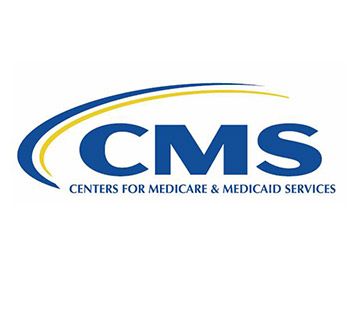When a Capitated Payment Arrangement Makes Sense
Question
We operate a mid-sized ambulance services in the Midwest. Recently, one of our local hospitals entered into an agreement to become part of a large health system. We are increasingly being asked to transport patients from this local hospital to an affiliated facility in the neighboring city. These patients are being transported for consultations, medical tests, etc., and then being transported back to the local hospital. These transports become the financial responsibility of the health system, which has resulted in our monthly invoices to the hospital increasing nearly ten-fold over the past year. Recently, the hospital approached us with a proposal to move to a capitated payment arrangement. Are these arrangements permissible? And, if so, are there any “dos” and “don’ts” we should know about?
Answer
As the AAA’s Medicare Consultant, I am probably asked this question, or some variation of this question, several times a month. To me, these questions are a natural reaction by our industry to one of the larger tectonic shifts in health care over the past decade, namely the increasing footprint of national and regional hospital health care systems. According to the American Hospital Association, approximately 65% of hospitals nationwide were part of a larger health system in 2016. This is up from 51% in 1995. As these health systems have grown larger, ambulance providers are increasingly looking for alternatives to the traditional fee-for-service payment models.
Broadly defined, a “capitated payment” arrangement is any arrangement where the facility pays the ambulance provider a set amount to cover all or a portion of the transportation costs it incurs during a period of time, without regard to the specific volume of transports. A simple example would be a flat monthly fee for all transportation costs.
There is nothing in federal law that prohibits the use of capitated payment arrangements. The HHS Office of the Inspector General has signed off on capitated payment arrangements in numerous contexts, including the compensation paid to insurers under the Medicare Advantage Program (Medicare Part C). In fact, it could be argued that the Medicare Ambulance Fee Schedule includes some principles of capitation, e.g., it does not reimburse ambulance providers separately for certain ancillary services.
Therefore, capitated payment arrangements are something ambulance services can consider offering to their facility counterparties. However, you should aware that the normal prohibitions under the federal anti-kickback statute continue to apply. To the extent the OIG has a concern related to capitated payment arrangements, that concern would be that the capitated payment amount is used as a means of disguising an otherwise impermissible discount being offered to a potential referral source. In other words, the capitated payment must be structured in a way that avoids any improper remuneration to a potential referral source.
The arrangements do offer several advantages to both the ambulance provider and the facility. For the ambulance provider, the primary advantage is a stable, steady source of cash. However, there are other advantages, including the administrative benefits associated with submitting a simple monthly invoice, rather than a detailed invoice listing numerous transports. Many providers also find that a flat rate reduces tensions with the facilities, as they don’t have to engage in negotiations over why a particular transport is being billed to the facility. For the facility, the primary benefit is that it fixes their costs for transport during each measuring period. An ancillary benefit is that it offers a measure of insurance against unforeseen events (e.g., an MRI machine at hospital breaks down for an extended period of time, and as a result, the hospital is forced to incur the costs of sending patients to an affiliated facility for testing). Generally speaking, as the total volume of services rises, the benefits to moving away from a fee-for-service model also increases.
As noted above, capitated payment arrangements come in many forms, ranging from relatively simple to mind-numbingly complex. However, all arrangements share certain common features. The first is an estimate of the volume of services the facility would be purchasing from the ambulance service during any particular measuring period (hereinafter referred to as the “volume benchmark”). To the extent you are currently the facility’s vendor, this could be calculated based on past volume. This is then multiplied by the “price” of each service to arrive at the amount of the capitated payment. For example, if past history indicates that a facility pays for an average of 100 ambulance transports per month, and the parties agree to a rate of $200 per trip, then the monthly payment would be $20,000 per month. This monthly rate would stay the same regardless of whether the facility ends up responsible for 20 trips in the next month, or 200.
This brings us to one of the key features to a properly structured capitation agreement, i.e., both parties should have some degree of “risk” under the arrangement. In the example listed above, the facility runs the risk that the actual volume of services it would have otherwise been responsible for is less than the estimated 100. If so, it would have essentially paid more than $200 per transport. The ambulance provider bears the opposite risk, i.e., if the number of transports the facility would have paid for ends up being more than 100, it ends up receiving less than $200 per transport. As long as both parties bear risk, the arrangement is permissible.
If, however, one party bears no actual risk under the arrangement (e.g., because the monthly payment is based on an unreasonably low volume benchmark), the OIG could see the arrangement as a disguised way of rewarding the facility for other referrals. Thus, the key to any capitated arrangement is a good-faith estimate of the number of services involved. Please note that there is nothing wrong within incorporating language to adjust the monthly payment if the actual volume over any period of time is radically different than the volume benchmark. For example, I frequently include language that calls for the monthly payment to be recalculated if the actual volume is 20% more or less than the volume benchmark over any calendar quarter. These adjustments can be made prospectively (i.e., they only apply to future monthly payments) or they can be paid retroactively. To the extent you want to include an adjustment mechanism, the guiding principle is that any adjustment should be for the purpose of better estimating the volume benchmark.
Capitated payment arrangements may not be appropriate for all ambulance providers. However, as fee-for-service becomes an increasingly smaller portion of your facility partners’ operations, it may make sense to consider these arrangements.
Have an issue you would like to see discussed in a future Talking Medicare blog? Please write to me at bwerfel@aol.com.











 To give you a sense of the impact of MFP over time, this chart shows the payment of an ALS emergency transport in New York City over the past several years. In 2010, the Medicare allowable rate for this transport was $491.06. In 2016, the Medicare allowable rate for that same transport will be $517.02, an increase of 5.3%. However, without the MFP, the Medicare allowable would have been $544.22, or 10.8%. In other words, our Medicare increase would have been more than twice as much in the absence of the MFP.
To give you a sense of the impact of MFP over time, this chart shows the payment of an ALS emergency transport in New York City over the past several years. In 2010, the Medicare allowable rate for this transport was $491.06. In 2016, the Medicare allowable rate for that same transport will be $517.02, an increase of 5.3%. However, without the MFP, the Medicare allowable would have been $544.22, or 10.8%. In other words, our Medicare increase would have been more than twice as much in the absence of the MFP.